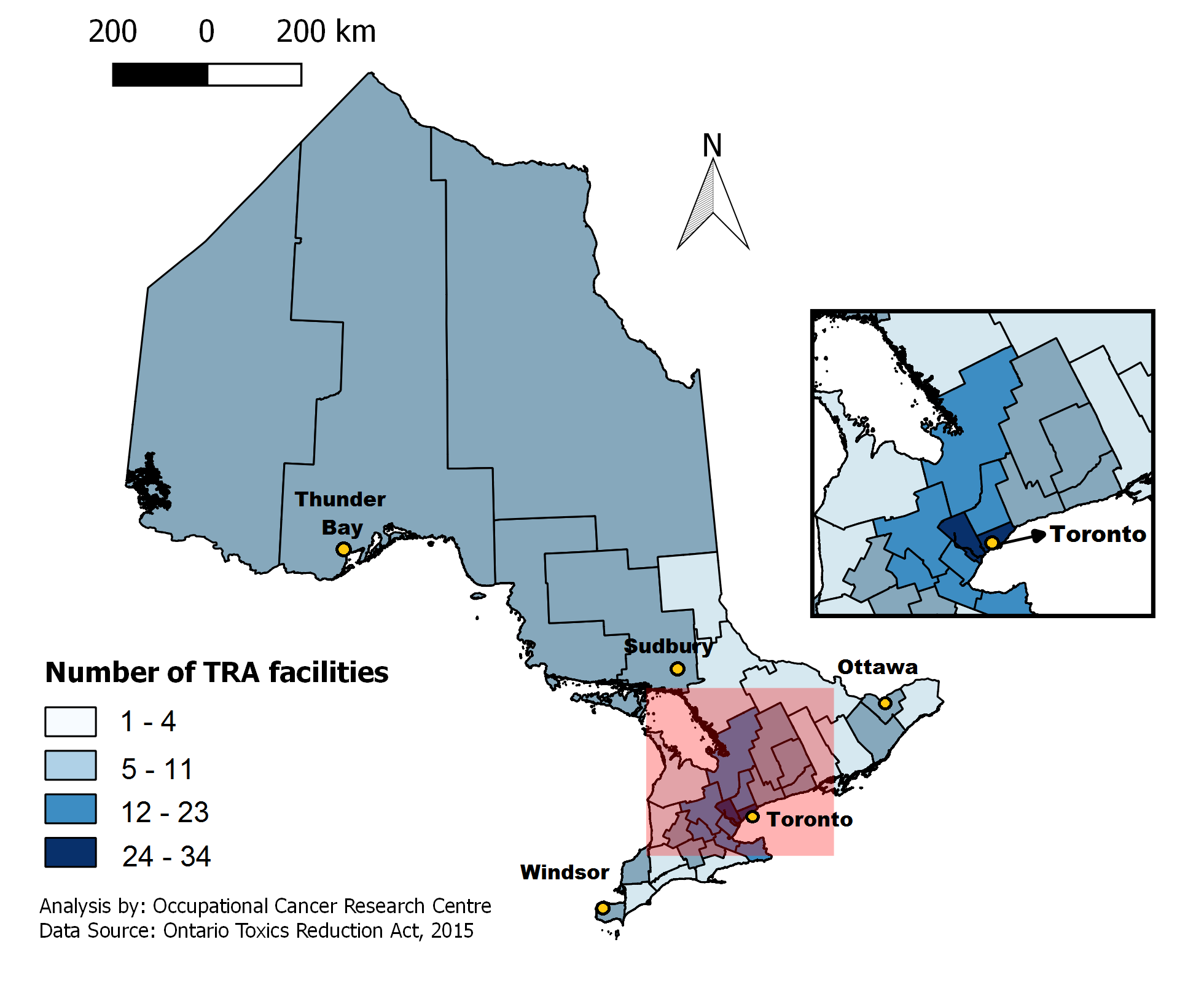
Summary
Exploring applications of the Ontario Toxics Reduction Act (TRA) for exposure surveillance
Exposure to toxic substances in the workplace contributes significantly to the global disease burden and is increasingly recognized as an important disease risk factor. In Ontario, the reduction of workplace exposure to toxic substances, including cancer-causing agents, could help prevent many occupational diseases in the province. An effective exposure surveillance system can serve as a tool to inform workers of potential hazardous substances they may be exposed to in their workplace and also aid policy makers in setting priorities for occupational exposure monitoring and enforcement activities.
Data from exposure surveillance databases can be used to establish priorities for disease prevention related to particular types of toxic substances, or in particular industrial sectors or regions where these substances are used. Fortunately, a legislated database that collects annual data on the industrial use of various toxic chemicals already exists in the Province of Ontario. The Toxics Reduction Act (TRA), Ontario Regulation 455/09, requires industrial facilities in four major manufacturing and mineral processing sectors to track and report their use and emission of toxic substances to the Ontario Ministry of Environment and Climate Change. The TRA is the only program of its kind in Canada and provides a unique opportunity to leverage this type of data for an exposure surveillance system in occupational health.
The OCRC produced a report describing the potential application of the TRA Program as an exposure surveillance tool by examining current trends in toxic substance use by industry sector, geographic region and substance type. Our findings identified geographic regions in Ontario where the use of cancer-causing substances was highest, such as in Lambton County and the City of Sudbury. We also used TRA data to identify particular sectors, such as the chemical manufacturing and the primary metal manufacturing sectors, which would benefit from an exposure surveillance system. Our findings suggest that targeted toxic substance use reductions in key sectors and regions could minimize potential occupational exposures among workers to lower overall occupational disease risk. The full report, as well as the key findings, are presented below.
Exploring applications of the Ontario Toxics Reduction Act for exposure surveillance
Catherine E. Slavik, Sheila Kalenge, Paul A. Demers
May 2018
Location of TRA Facilities in Ontario

Carcinogen Use by Industrial Sector
Total estimated use* of carcinogens and top carcinogens† used by industrial sector, ranked by use in tonnes, TRA Program 2011-2015.
| Sectors using carcinogens | Mean employees | Total estimated use (tonnes) | Top carcinogens used |
| Chemical manufacturing | 12,819 | 10,468,540 | Benzene; Vinyl chloride; 1,3-Butadiene |
| Primary metal manufacturing | 132,401 | 4,749,630 | Nickel; Benzene; Lead |
| Petroleum and coal products manufacturing | 14,891 | 1,977,480 | Benzene; 1,3-Butadiene; Nickel |
| Mining (except oil and gas) | 28,461 | 658,310 | Nickel; Lead; Arsenic |
| Transportation equipment manufacturing | 42,223 | 205,020 | Nickel; Hexavalent chromium; Lead |
| Paper manufacturing | 18,307 | 28,530 | Formaldehyde; Lead; Arsenic |
| Fabricated metal product manufacturing | 10,676 | 25,140 | Nickel; Hexavalent chromium; Lead |
| Wood product manufacturing | 4,102 | 9,770 | Formaldehyde; Arsenic; Benzene |
| Machinery manufacturing | 1,523 | 7,650 | Nickel; Lead |
| Plastics and rubber products manufacturing | 3,891 | 6,370 | Lead; Hexavalent chromium; 1,3-Butadiene |
* Values for estimates of use were rounded to the nearest 10th.
† Top carcinogens used represent the three carcinogens reportedly used in the largest quantities, listed in decreasing order.
